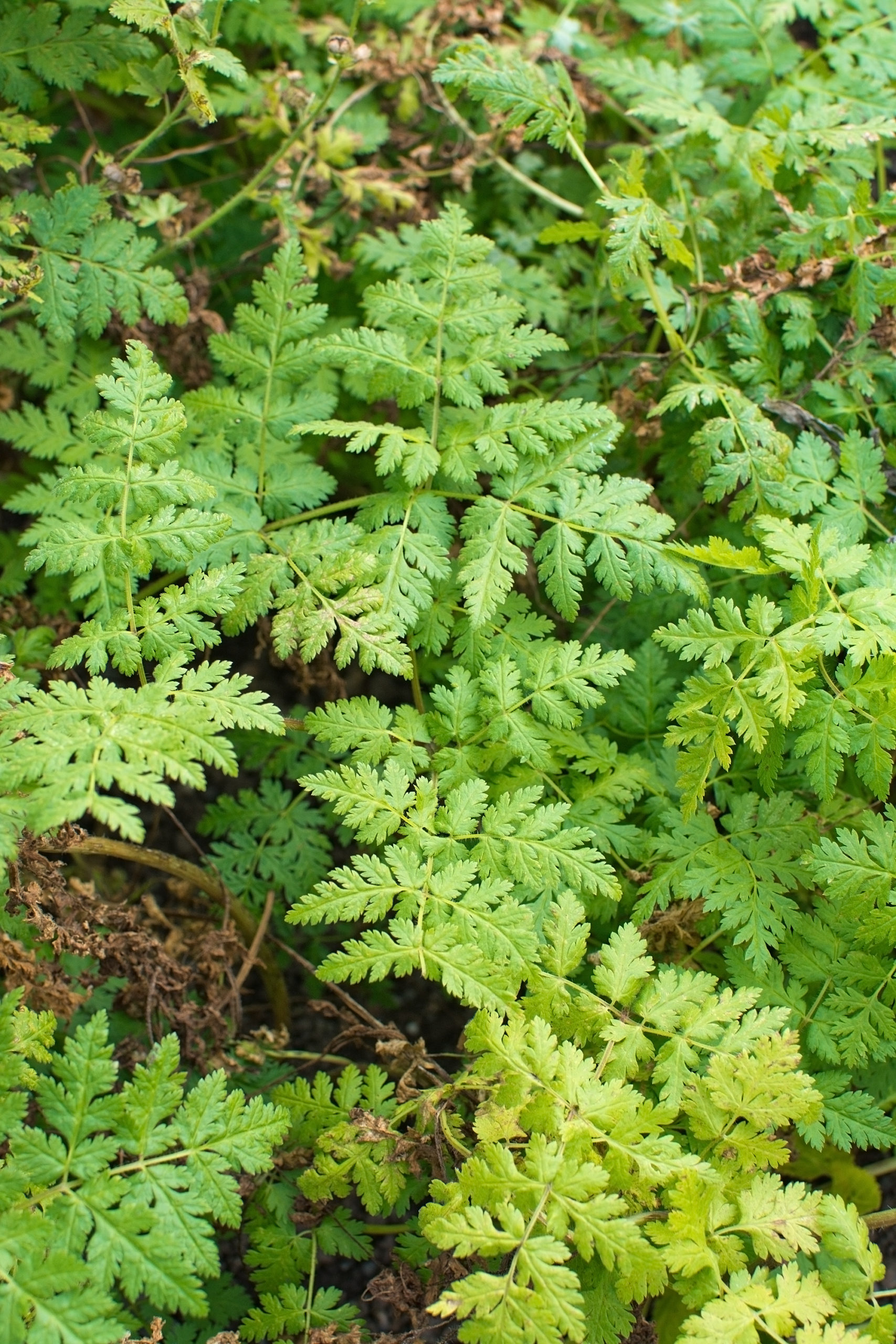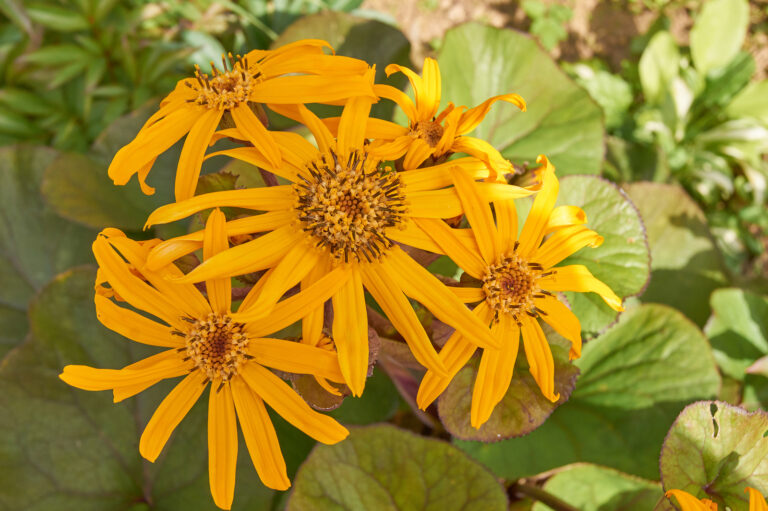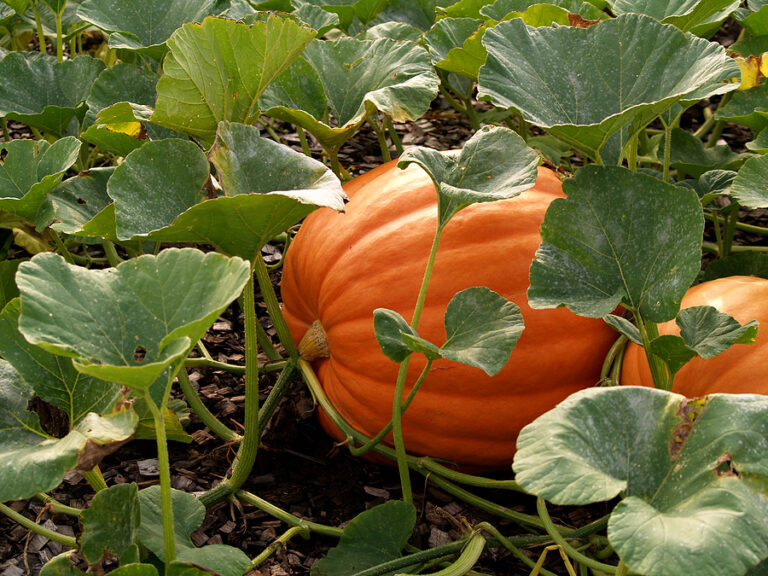How to Plant, Grow, and Harvest Sweet Cicely
Sweet cicely is a perennial herb–a member of the parsley family. The leaves and seeds of sweet cicely are very sweet flavored with a hint of licorice. Sweet cicely can be used in the kitchen as a sweetener and to cut down the acidity of fruit. Sweet cicely looks much like a fern and its clusters of white flowers atop tall stems make it a showy addition to perennial borders as well as herb gardens.
Here is your complete guide to growing sweet cicely.
Where to plant sweet cicely
- Best location: Sweet cicely prefers shade or partial shade; plants will die easily in full sun. The back of a border is a good spot for sweet cicely; it grows taller than most herbs.
- Soil preparation: Plant sweet cicely in compost-rich, well-drained soil. Add aged compost to planting beds every spring. Sweet cicely prefers a soil pH of 6.5.
Articles of interest:
- How to Grow Herbs
- How to Start an Herb Garden
- Best Herbs for Container Growing
- Herbs for Cool Season Growing
- Grow 20 Herbs for Cooking
When to plant sweet cicely
- Seed starting indoors: Fresh seeds can be started indoors in late spring. Seeds need stratification or cold treatments before they will germinate. Place seeds in moistened seed starting mix in a covered container in the refrigerator for three months before sowing. Germination will take about 30 days but can sometimes take up to 8 months. Spring division of roots is the surest way to start sweet cicely.
- Transplanting to the garden: Sweet cicely has a long taproot and does not like to be moved. It’s best to transplant sweet cicely when it is small before taproots grow long. Set out transplants after the last frost in spring. Transplant sweet cicely to a shady part of the garden.
- Outdoor planting time: Sow seed in spring or late summer for germination the next spring. Germination can be very slow. Seeds germinate only after undergoing a series of freezes and thaws.
How to plant sweet cicely
- Planting depth: Sow seed ½ inch deep. Set divisions at the same depth they were growing.
- Spacing: Space plants 2 feet apart.
- How much to plant: Grow 6 plants for culinary use; grow 12 plants for preserving.
Sweet cicely companion plants
- Companion planting: Sweet cicely is rich in nectar; it will attract honeybees and beneficial insects to the garden. Avoid planting sweet cicely near parsley and carrots; they attract the same pest insects.
Watering and feeding sweet cicely
- Watering: Sweet cicely grows best where the soil stays just moist; do not let the soil dry out.
- Feeding: Add aged compost or commercial organic planting mix to planting beds ahead of planting sweet cicely.
Container growing sweet cicely
- Container growing: Grow sweet cicely in a container at least 6 inches high and wide.
- Winter growing: Sweet cicely can be grown indoors in a pot in winter. The plant will die back to the ground after the first autumn freezes.
Sweet cicely pests and diseases
- Pests and diseases: Sweet cicely is usually pest and disease-free.
How to harvest sweet cicely
- When to harvest: Pick sweet cicely leaves anytime you need them once plants are 8 inches tall or taller. Harvest seeds as they dry and ripen beginning in midsummer; place seed heads in a paper bag to catch ripe seeds as they fall. Seed heads resemble little umbrellas.
- How to harvest: Snip leaves and seed heads with a garden pruner or scissors. Dig roots with a spading fork in late fall after they are a year old.
Sweet cicely in the kitchen
- Flavor and aroma: Sweet cicely has the flavor of anise and the celery-like scent of lovage.
- The leaves, flowers, seeds, and roots of sweet cicely are all edible and aromatic.
- Leaves: Use sweet cicely leaves fresh in salads, eggs, soups, stews, vinegar, cookies, cakes, and fruit desserts. The dried or frozen leaves are excellent with fish.
- Seeds: Fresh seeds can be eaten like candy; they have a sweet, nutty flavor. Use chopped or crushed seeds in fruit dishes and ice creams. Use ripe seeds in cookies and pastries.
- Roots: Sweet cicely roots can be peeled, chopped, and eaten raw in salads or stir-fries. Use fresh or dried roots as a vegetable (similar to parsnip) in soups, stews, or salads. Slice them for stir-fries or dice or shred them into salads.
- Teas: Use sweet cicely leaves fresh or dried in tea.
- Cooking: Place stems of sweet cicely on the barbecue coals when grilling fish; they will impart a sweet licorice flavor to grilled fish. Use seeds in cakes and desserts. You can decrease the amount of sugar in the recipe by adding sweet cicely.
Preserving and storing sweet cicely
- Refrigeration: Fresh leaves can be wrapped in a damp paper towel placed in a perforated plastic bag and stored for a few days in the vegetable crisper.
- Drying: Dry leaves and stems by bunching stems together and hanging them upside down in a cool, shady place with plenty of air circulation. Leaves will dry in a week to 10 days.
- Freezing: Sweet cicely leaves can be frozen in ice cubes.
- Seeds: Place seed heads in a paper bag and hang upside down out of the direct sun; seeds will drop into the bag as they ripen.
- Storing: Store dried leaves and seeds in an airtight container.
Sweet cicely propagation
- Seed: Sweet cicely seed can take up to 8 months to germinate. Seeds must be placed in the refrigerator or freezer for a few weeks before sowing. Sow seed outdoors in autumn for plants the next spring.
- Division: Root division is the surest way to propagate cicely. Dig, divide, and replant roots in early spring. Each piece of root division must have a bud on it. Plant the root division at the same depth at which it was growing.
Get to know sweet cicely
- Botanical name and family: Myrrhis odorata is a member of the Apiaceae—parsley family.
- Origin: Europe, from the Pyrenees to the Caucasus.
- Type of plant: Sweet cicely is a perennial; however, it will die back in winter.
- Growing season: Summer
- Growing zones: Sweet cicely grows best in zones 3 to 7.
- Hardiness: Sweet cicely is cold hardy to -20°F. It grows best in mild summer regions. It does not grow well in hot climates.
- Plant form and size: Sweet cicely grows to 3 to 6 feet tall. Several thin branching stems grow upright from a taproot. The mature plant can be mistaken for a fern.
- Flowers: Sweet cicely has flat clusters of tiny white flowers that open to form a bloom similar to Queen Anne’s lace umbels about 2 inches across. Flower clusters grow at the end of 3 to 4-foot stems. Elongated brownish-black seed capsules follow after the flowers fade.
- Bloom time: Sweet cicely blooms in midsummer.
- Leaves: Sweet cicely appears soft and ferny; finely lobed or toothed leaflets are bright green with whitish undersides. Leaves grow from a central leafstalk and secondary branches. The secondary branches have deeply cut leaflets of descending size toward their tips—making the outline of a Christmas tree. The leafstalks wrap around the stem of the plant.
Also of interest:
- Anise
- Anise Hyssop
- Arugula
- Basil
- Bay
- Bee Balm
- Borage
- Calendula
- Caraway
- Catnip
- Chamomile
- Chervil
- Chives
- Cilantro-Coriander
- Clary
- Costmary
- Cress
- Dill
- Fennel, Sweet
- Horseradish
- Hyssop
- Lavender
- Lemon Balm
- Lemongrass
- Lemon Verbena
- Lovage
- Marjoram
- Mint
- Nasturtium
- Oregano
- Parsley
- Perilla
- Rosemary
- Sage
- Salad Burnet
- Savory
- Scented Geranium
- Shiso
- Sorrel
- Stevia
- Sweet Cicely
- Tarragon
- Thyme
Related articles:
Best Herbs for Container Growing
Planning the Home Fruit Garden
Garden Planning Books at Amazon:
- Vegetable Garden Almanac & Planner
- Kitchen Garden Grower’s Guide Vegetable Encyclopedia
- Vegetable Garden Grower’s Guide
- Tomato Grower’s Answer Book







